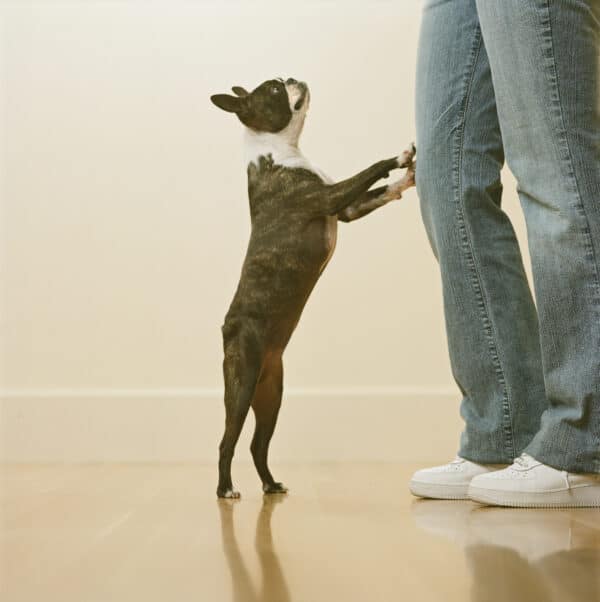Everyone wants a happy, content furry family member. Happy dogs. Happy times together. How do we know if our dog is happy, and what is happiness for them? Veterinarian behaviorist and researcher, Dr. Niwako Ogata, at Purdue University, defines happiness as overall “wellbeing.” Three major components of wellbeing — emotional, cognitive and physical wellness — must be considered, she says, to answer, ‘Is my dog happy?’
Signs that a dog is happy
Emotional and cognitive components often do a better job at describing wellbeing on a daily basis, she says. If you want to know if your dog is happy, look for these signs:
- Is content and satisfied in the home environment
- Can relax and stretch out at home.
- Has a well-balanced personality and can cope in new situations
- Is willing to try and join you in new activities or learn something new
- Is overall physically healthy
“Since there are a lot of ways we can interpret happiness (joy versus excitement, versus contentment, etc.), there can be different ways that dogs might express happiness,” says animal behavior consultant Allie Bender, coauthor of Canine Enrichment for the Real World and co-owner of Pet Harmony.
Dogs express happiness through:
- Play signals
- Loose, relaxed body language
- Behavioral diversity (expresses a range of behaviors)
- Displaying species-typical doggie behaviors in healthy, safe and appropriate ways
“I think the important thing here is to remember that content is a temporary state of being. It’s not a personality trait or something that can exist forever without change. Individuals fluctuate between different emotional states,” Allie says.
Dog happy, chill out signs include:
- Deep breathing
- Resting or sleeping
- A low resting heart rate (If your dog piles on top of you as many do, this can often be felt.)
Specific body parts such as the tail or ears are important to reading body language signs, but don’t completely answer ‘Is my dog happy?’
A slow, relaxed tail wag might show happiness for example, but a dog barking aggressively at a stranger while wagging the tail is “more negative arousal excitement not necessarily fetch-with-you excitement,” Dr. Ogata says. You can’t judge a dog by his tail.
Happiness also depends on context. Environmental factors affect wellbeing, even for short periods of time. Much depends on the individual dog. Well-balanced personalities around the house might be a totally different matter for the sound-sensitive pup at a parade.
“Like a human, there are lots of preferences and tendencies,” Dr. Ogata says. Tweak those non-content moments, as emotional stress eventually affects their immune response, often considered the gateway to disease. Long-term stress (even boredom) takes a physical toll, just like us, she says.
To learn more about chronic stress, check out Stressed Out by Pat Miller, CBCC-KA, CPST-KA on Dogster’s sister publication The Whole Dog Journal .
Emotional, cognitive and physical health all have their role to play in answering, ‘Is my dog happy?’ Paying attention to those relaxed, content moments goes a long way toward deciding how and when to adjust life together.






